|
|
| Fruit,
Vegetables and Gourds |
Choi Sum |
|
Choi Sum is part of the mustard family
Brassica rapa subsp. parachinensis,
which is known by many different names and can refer
to many slightly different types of virtually identical
looking plants. These can also include Ba Choi and Cheung
Choi, although no native Cantonese would ever muddle
these names. Choi sum can be distinguished by its small
yellow flowerheads and bright green oval leaves. It
is one of the most commonly cultivated plants in Asia
and is grown under a wide range of different climates
and soil types.
Note:
Sum Choi refers to organically grown Choi Sum.
Other Names:
Tsoi sum (Hong Kong Chinese) and cai xin (Mandarin Chinese),
cai ngot (Vietnamese), pakauyai or pakaukeo (Thai),
saishin (Japanese), Chinese soup green, white flowering
cabbage, mosk pak choy (English), Yau Choy, Yu Cai (Yeou
Tsai), Chinese flowering cabbage oil greens, Yu Toy,
and False Pak Choi.
We have used the spelling 'choi' because in
Cantonese the last letter is a rising sound, whereas
'choy' would indicate a flat sound, which is not
correct.
Also know that the very similar Cheung Choi is
completely light green, except for the yellow
flowers. Cantonese would never refer to Cheung
Choi as Choi Sum!
Leaves are sold in clumps by weight, and comprise
small plants that have perhaps eight or ten leaves
in each. They are usually picked just above the
root and sold the same day. Chinese at home have
no problem cooking leaves that have holes in them,
and this goes to show they are fresh and have
not been subject to pesticides or other nefarious
sprays (Sum Choi).
Buyer Tip
When purchasing look at the end of the stems where
they were broken off. There is usually a small
white or lighter coloured centre. Buy those with
no discernable colour change, or the least amount
of light colouration.
Many Chinese prefer to buy these when they have
a lot of yellow flowers on them, and have perhaps
got slightly 'leggy'. The flowers are edible and
very tasty, and are never removed. Smaller plants
are considered to be more tender and succulent.
Prepare the leaves simply by washing under running
water, break off the bottom inch or so, and remove
any unsightly leaves. Keep the yellow flowers
if present, as these are delicious also.
Cooking is very simple, with the leaves being
covered with water and brought to the boil. They
are then simmered for 5 minutes or less.
|
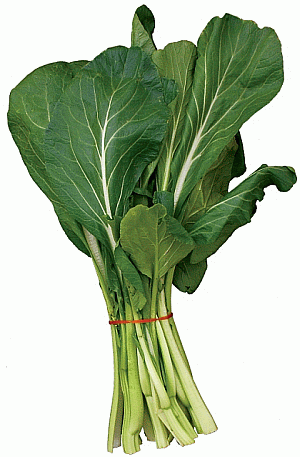
|
|
|
Recipe 1
Choi Sum is usually covered with water and left to simmer
for a few minutes, and no longer than 5 minutes. Apart
from water you can also add a clove of garlic, and that
is all - not even salt or pepper!
As with Cheung Choi and Ba Choi you can add extra water
to make a soup. However, this tends to be quite a bit
stronger than these others, so we do not recommend doing
this unless you also add: quite a lot of garlic and
fresh chopped ginger strips + salt and pepper to taste.
Never overcook the leaves, as British chef's tend to
prefer. They are meant to be edible and not a green
mush.
Recipe 2
The common alternative is to steam the leaves with a
lot of garlic and or fresh ginger strips. This is done
by using a wok as a steamer, and placing a dish such
as small bowl or soup dish on a rack. Add water to the
wok and bring to the boil. Add the leaves and cover
for 5 minutes. There will be a little juice when cooked,
which blends beautifully with the garlic and ginger.
Steaming leads to a more intense and stronger flavour
with more bitter taste.
Recipe 3
This is as recipe 2 above, but after cooking you flash
fry the leaves for a few seconds only, tossing continuously.
Alternatively you can stir fry them for a minute or
so. This gives them a shinny look and makes them slippery
to pick up using chop sticks. You need as little as
five seconds frying, and ensure all excess oil is allowed
to drain away before serving. In this case they would
be presented to table without any juice, and normally
laid out in line on a platter. This style is usually
reserved for Choi Sum that quite resembles small English
purple flowering broccoli, before the flower pods open.
Related Pages:
Ba Choi
Cheung Choi |
|
This information is as supplied by ourselves,
and ably supported by our friends and various internet
portals. |
|
| Search
this Website |
|
|
| Descriptions |
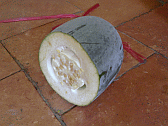
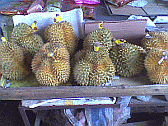
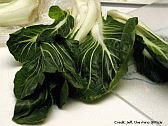
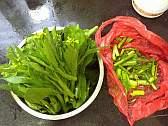
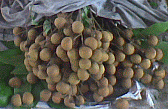
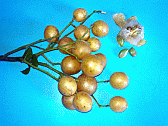
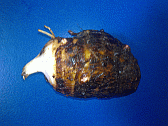
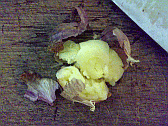
|
| Chinese Recipes |
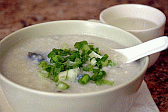
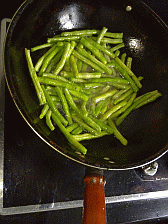
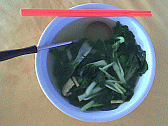
|
|